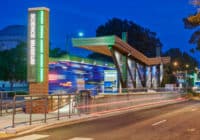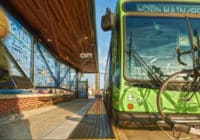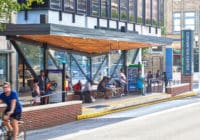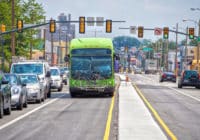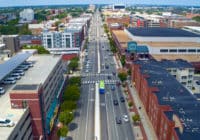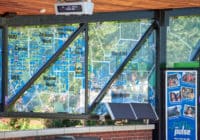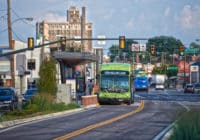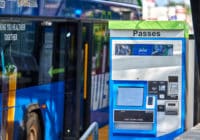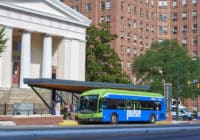GRTC Pulse Bus Rapid Transit (BRT) System
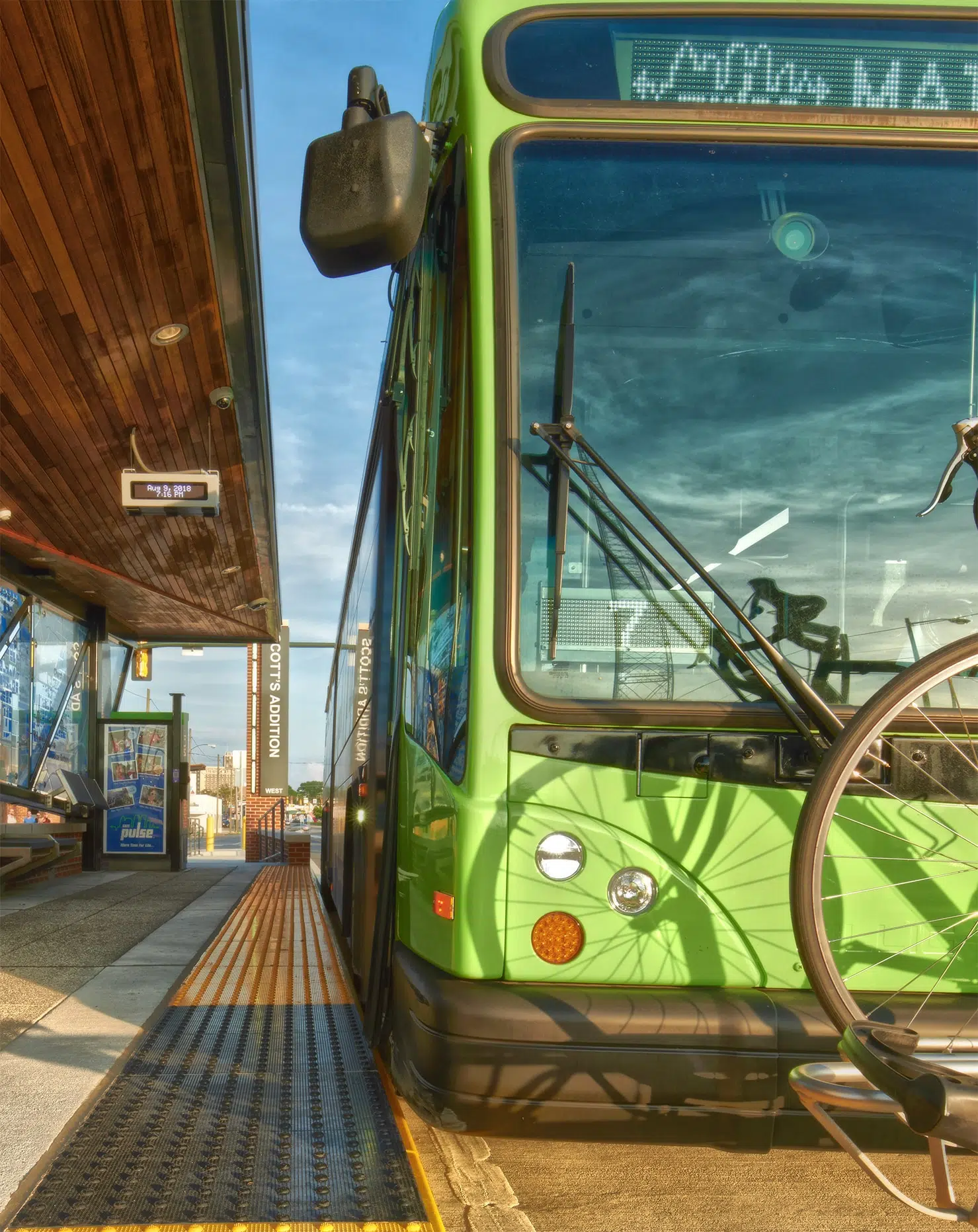
As the first Bus Rapid Transit (BRT) system in Central Virginia, the Greater Richmond Transit Company (GRTC) Pulse connects passengers to destinations throughout the City of Richmond and Henrico County. GRTC Pulse improves travel times, delivers better frequency, and provides transit amenities for passengers, including Wi-Fi on buses, real-time bus arrival information, environmental friendly and quiet compressed natural gas (CNG) bus rapid transit vehicles, 3.2 miles of dedicated bus-only lanes, level boarding, and transit signal priority at intersections.
Kimley-Horn provided design, construction support, and integration services for this 7.6 mile, high-capacity, high-frequency transit system. Pulse BRT is helping to enhance economic development, improve educational opportunities, provide access to employment and healthcare, and advance quality private investment.
Signature Stations
Residents and visitors can explore the community via one of 26 station platforms (10 median, 16 curbside) along Broad Street and Main Street from Willow Lawn to Rocketts Landing. Each station offers off-board fare collection through services such as ticket vending machines (TVM), smart cards, and mobile payment. Additional station amenities include level-boarding platforms, real-time bus arrival information, passenger lean rails and benches, totem bus arrival indicator lights, CCTV, and emergency phones. The station glass features a map of the GRTC Pulse route and highlights destinations and attractions within walking distance of BRT stations accessible via Quick Response (QR) codes.
Transit Technology
Kimley-Horn designed and upgraded infrastructure, technology, and operations at more than 50 traffic signals to accommodate transit system priority and queue jump technologies, supporting BRT service every 10 minutes throughout the day and every 15 minutes off-peak. Real-time bus arrival information signs and totem bus arrival indicator lights enhance riders’ experience at BRT stations. CCTV security cameras are connected to GRTC’s Transit Operations Center as well as the City of Richmond’s Emergency Communications Center via an advanced fiber optic network.
Incorporating BRT into the Community
Kimley-Horn was the lead consultant for the $65 million BRT project—a collaborative effort by the City of Richmond, Henrico County, GRTC Transit System, and the Commonwealth of Virginia funded by a TIGER Grant. In its first three months of operation, GRTC Pulse ridership far exceeded expectations, welcoming more than 6,000 riders each day. Stakeholder meetings with local agencies, businesses, residential associations, and community groups were held to solicit community input, an essential component of the project’s success. To ensure continuous feedback, public involvement activities such as working groups and meetings were provided throughout the project’s design phase. GRTC Pulse will contribute to the area’s goals of improving safety, accessibility, and reliability of transit services; boosting the corridor’s livability; revitalizing commercial properties; and stimulating economic development.
Kimley-Horn successfully supported negotiations for a partnership between GRTC and Virginia Commonwealth University (VCU) that allows VCU and VCU Health to ride GRTC’s Pulse BRT and regular fixed-route bus service for free. This partnership can positively impact GRTC Pulse BRT and local transit service, influencing the perception and adoption of the BRT and transit in the community as a viable mode of modern transportation.
I’m very pleased with the work from Kimley-Horn. The team is always on top of current activities and is forward thinking—looking at not just the deliverables, but all BRT components that make the project challenging. It’s that attention to the detail that makes this project a game changer for transit in our city.
Stephen McNally
| Construction Manager & Project Administrator
GRTC Transit System
The Pulse BRT is an innovative transportation solution for the Richmond area because it supports the opportunity to transform the core commercial corridor of Richmond through high-speed and high-tech bus transit. This investment is already bringing new development to the City that reduces the need for parking and provides vibrant, walkable and mixed-use development attractive to businesses and residents alike.
Unwanna Dabney, Ph.D.
| Chapter President
WTS Central Virginia
Project Recognition
- 2020 “The Richmond Pulse– A Lesson in Community”; International Parking & Mobility Institute – Parking & Mobility
- 2018 Innovative Transportation Solution of the Year Award; Women’s Transportation Seminar (WTS) – Central Virginia Chapter

